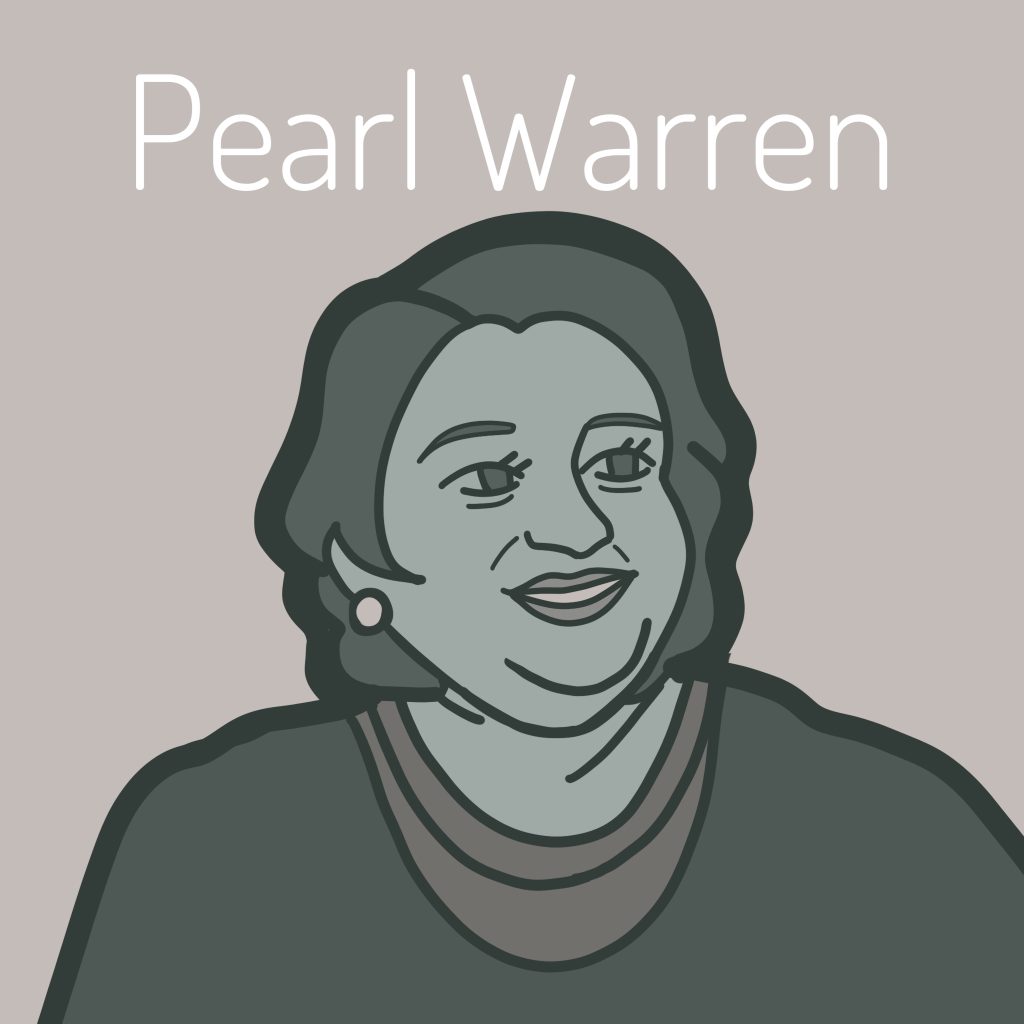Pearl Kallappa Warren (she/her)

by Andrew Choi (he/him)
Living and growing up during a time of cultural upheaval and assimilation for many Indigenous people across the US as policy forced Indigenous communities to urbanize. Pearl Kallappa was born in Washington on August 13th, 1911, and would be orphaned around the age of five. She was cared for by her grandmother Seatisa, who held on to the strong cultural values of their Makah Heritage and shared the same Indigenous names. During this time Kallappa would attend a predominantly White school in Neah Bay known as the Lincoln School. At this institution, she’d face discrimination and mistreatment for using or showing her Makah and Quileute languages and Indigenous cultures. Teachers treated her poorly for not speaking English and often washed her mouth out with soap as a punishment. Pearl Kallappa would grow up uncomfortable with the way her heritage wasn’t accepted and the ways white culture was mandated on her. During WWII, the need for war effort contributions increased Seattle’s manufacturing sector bringing in many Indigenous people looking for work. At the same time, political sentiments coerced some Indigenous people to assimilate not knowing there wouldn’t be adequate social resources for this transition. Pearl Kallappa, having been married during this time period, would be known from this point as Pearl Warren and after the war would settle in Seattle.
This period of time would be known for the displacement of Indigenous peoples through federal policies and referred to as the ‘termination era’ due to the number of terminated treaties. Many Indigenous people who came into larger cities like Seattle often lacked access to social resources, barriers to jobs, and increasing poverty without the ability to return home. Through a small network of informal Indigenous mothers in Seattle, care work and mutual aid were provided to those they could find but they found a larger endemic of underrepresentation, service and care to Indigenous people. On September 10, 1958, the American Indian Women’s Service League (AIWSL) was established by seven Indigenous mothers, including Pearl Warren who led until 1969, her daughter Mary Jo Butterfiel,d and Adeline Skultka Garcia. The AIWSL initially centered around “women” but quickly evolved to encompass Indigenous representation, social services, and helping those affected by forced urbanization. Garnering over 50 members by the end of 1958, spreading from the greater PNW to the Plains. The AIWSL would raise public consciousness about Indigenous issues, brought Indigenous cultural traditions to the greater parts of the city and was vital to networks of social services for Indigenous Peoples within the PNW and beyond.
Under Warren’s leadership the AIWSL would establish an ethnic newsletter in 1960 the Indian Center News that later became the Northwest Indian News by 1971. One of Warren’s main tenet’s was the revitalization of the Indigenous Communities through self-actualization and she preferred to not take government grants. The AIWSL would soon raise enough money to open the Seattle Indian Center on August 19 th , 1960. Warren would act as executive director for 11 years. Creating outreach programs, community space for the Indigenous community, and providing social services. Pearl Warren died in 1986, at the age of 74 in Washington state where her legacy lives on. Although the AIWSL would disband in 1980, her work and virtues still live on through the Seattle Indian Center helping revitalize, create awareness and space for indigenous peoples. A building in her honor operated as a homeless shelter in the Seattle Chinatown-International District until plans to relocate started in 2017.

